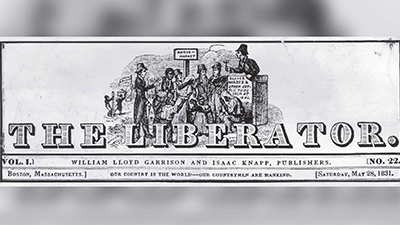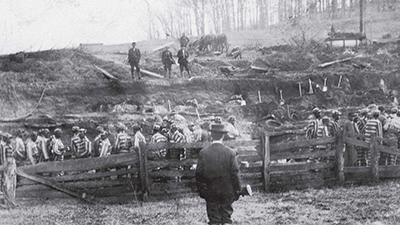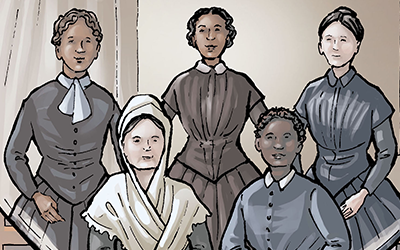Abolitionists
Driving Question: What impact did abolitionist movements have on political and economic structures during the long nineteenth century?
As industrialization drew workers into reform movements, some groups also worked to end the institution of slavery and the slave trade. Abolitionist networks included formerly enslaved people and their allies. These reformers connected with those in other reform movements as they struggled to counteract racist ideologies in the long nineteenth century.
Learning Objectives:
- Analyze how abolition movements grew and spread.
- Use the historical thinking practice of sourcing to evaluate theories about the abolition of slavery.
- Use a graphic biography to support, extend, or challenge the overarching narratives from this time period.
Vocab Terms:
- abolition
- activist
- debt
- factory
- gender
- reform
- suffrage
Opener: Abolitionists
To teach this lesson step, refer to page 2 of the Lesson 5.6 Teaching Guide.
Our Openers and Closers Guide will provide more information about these short, but important, activities at the beginning and end of each lesson.
Fighting for what is right can be extremely difficult and dangerous, and it can take incredible strength. Harriet Forten Purvis fought battles on multiple fronts.
Abolishing Slavery
To teach this lesson step, refer to page 3 of the Lesson 5.6 Teaching Guide.
Struggling to get students to read? In this thread in our online teacher community, teachers share strategies to encourage students to read.
Check out our Historical Thinking Skills Guide for an overview of the skills, like sourcing.
There’s always more than one side to a story. In this article, you’ll examine three explanations for the end of slavery, and then you’ll dig into the sources to understand how slavery was finally abolished in the United States.
-
Guiding Questions
-
Before you read
Preview the questions below, and then skim the article. Be sure to look at the section headings and any images.
While you read
Look for answers to these questions:
- Which countries in the Atlantic world were the earliest to abolish the slave trade? Which countries abolished it late?
- How might capitalism have helped end slavery?
- How might changing morality have helped end slavery?
- How might networks of Africans and descendants of Africans have helped end slavery?
- Did slavery end when it became illegal? Why or why not?
After you read
Respond to this question: Which of the arguments presented in this article do you think best explains why slavery was abolished?
The Limits of Abolition
To teach this lesson step, refer to page 8 of the Lesson 5.6 Teaching Guide.
Our Discussion Guide provides tips and tricks for facilitating classroom discussions.
The United States was one of the last nations in the Americas to abolish slavery. Why did it take so long? And when slavery finally was over, was it really over?
-
Guiding Questions
-
Before you read
Preview the questions below, and then skim the article. Be sure to look at the section headings and any images.
While you read
Look for answers to these questions:
- Where was the first large-scale post-abolition society created and how did it come about?
- When the British abolished slavery in their Caribbean colonies, to whom did the government pay compensation?
- How did societies in the British Caribbean continue to oppress formerly enslaved people?
- How did the US government treat African Americans post-abolition?
- Why did Europeans abolish slavery in their African colonies?
After you read
Respond to this question: Can you think of any ways in which your own society is still impacted by the history reviewed in this article?
Closer: Abolitionists
To teach this lesson step, refer to page 9 of the Lesson 5.6 Teaching Guide.
Return to the story of Harriet Forten Purvis as you consider how the evil of slavery was finally abolished. How does her story fit in with the three theories you encountered in this lesson?







